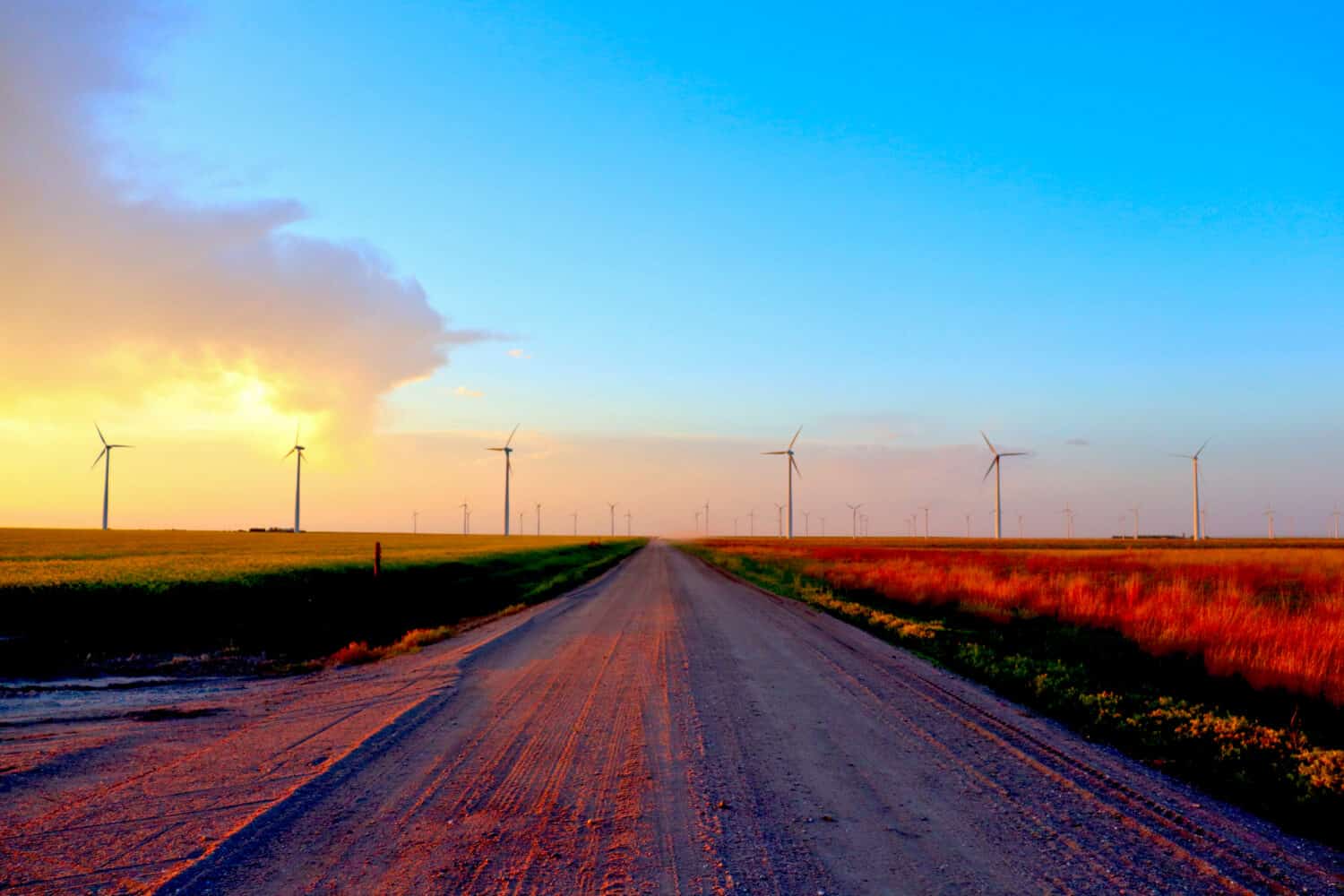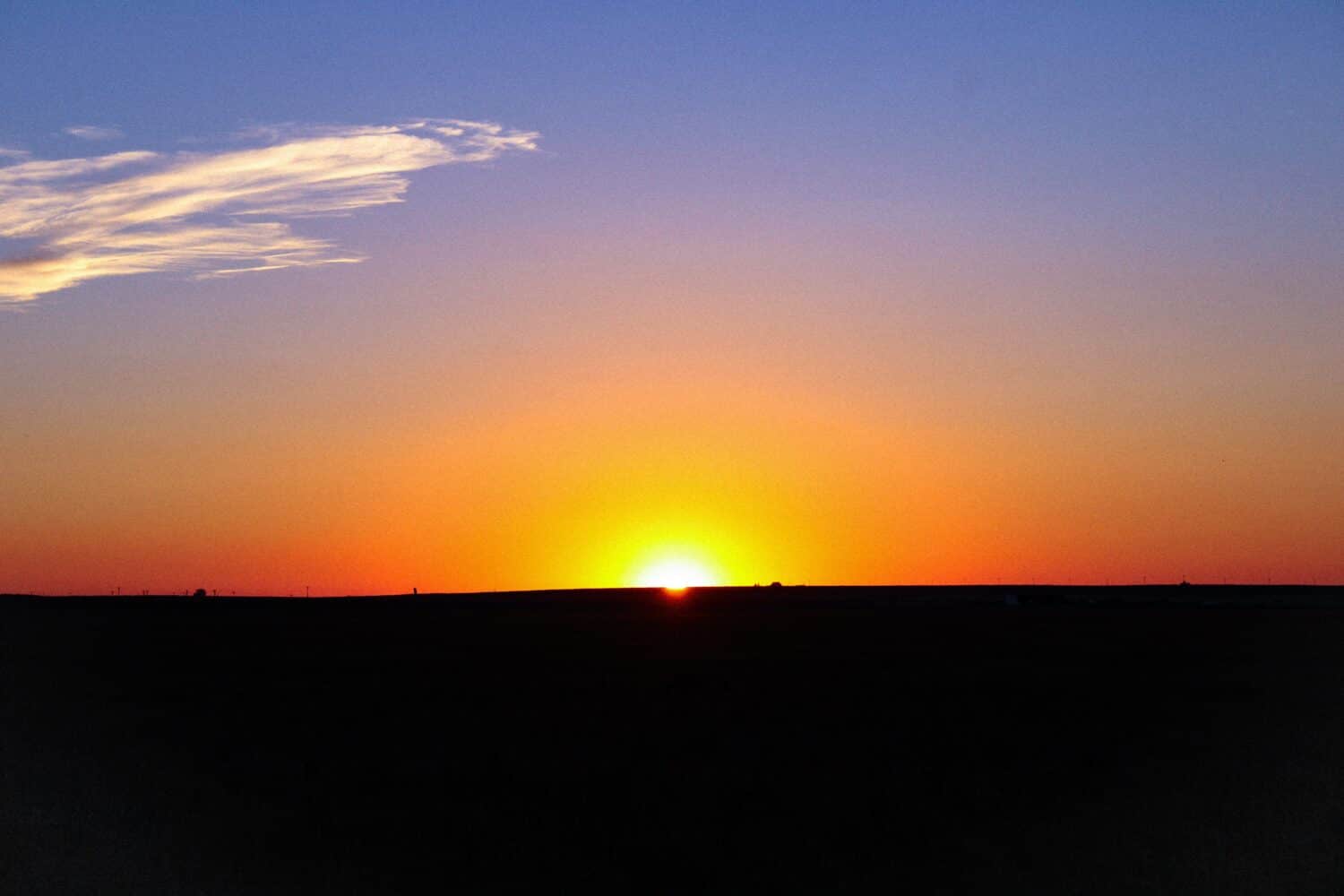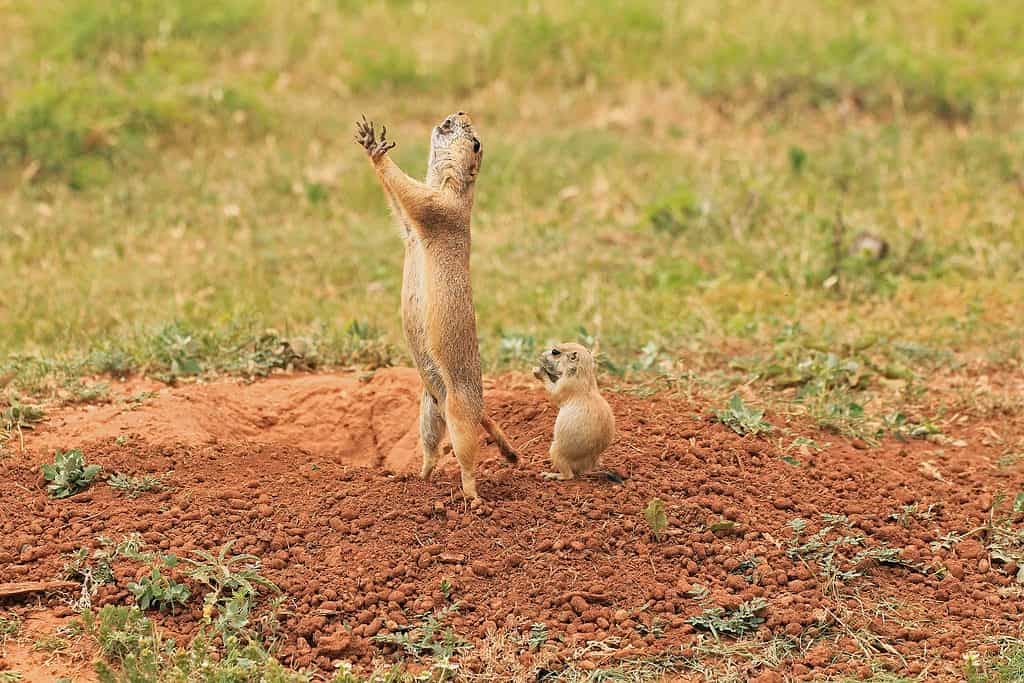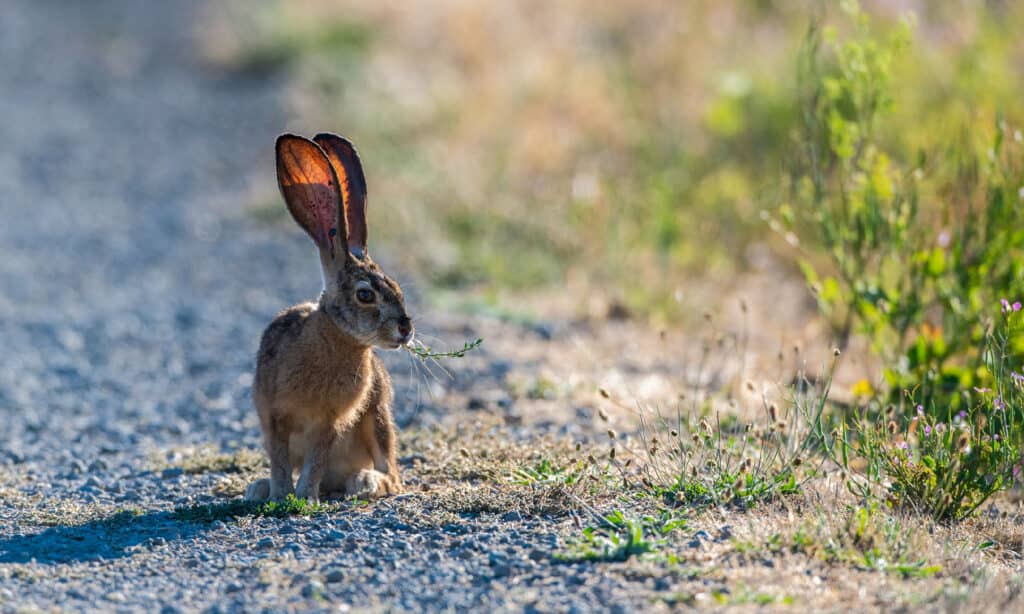The High Plains of western Kansas is known for its wide open spaces. In a relatively dry environment, natural lakes here are fairly rare. However, Kansas is home to some pretty impressive manmade reservoirs. One of these large reservoirs was only recently constructed. Read on to discover all about the newest lake in all of Kansas.

The sky stretches forever in western Kansas.
©Thomas Carton/Shutterstock.com
What is the Newest Lake in All of Kansas?
The Horsethief Reservoir found nine miles outside of the small town of Jetmore, is the newest lake in all of Kansas. In 2010, the reservoir opened for boating, fishing, and camping. Today, the park includes 1,600 acres of prairie land and 450 acres of pristine lake water.
Guests can camp in tents or rent cabins and yurts. The park is dotted with gazebos, pavilions, and wind blockers. After all, the wind blows strong in western Kansas. There are also plenty of family activities available, including a large playground, a basketball court, and an 18-hole Frisbee golf course. The lodge is a popular spot for special events such as family reunions or weddings. The lake provides ample fishing, and there is also some land reserved for hunting.

The newest lake in Kansas is located near the small town of Jetmore, Kansas.
©Ammodramus / Public domain – License
Where Is Horsethief Reservoir Located on a Map?
Situated in western Kansas in Hodgeman County, at 19005 SW 156 Highway, the Horsethief Reservoir is nine miles west of Jetmore, KS. It’s a little over half an hour north of Dodge City and about an hour to the east of Garden City. If you’re traveling from Wichita, it’s about a three-hour drive to the west.
Construction of Horsethief Reservoir: Kansas’ Newest Lake
As you can imagine, building a 450-acre lake in the middle of western Kansas takes a lot of planning. It was the 1990s when the manager of the Pawnee Watershed District began thinking about constructing the reservoir. Although the idea to build a reservoir in the area had been floated around since the 1930s.
Officials were interested in a watershed that could prevent floods and protect the downstream water quality. The water for the reservoir was to come from nearby Buckner Creek. However, before any construction could begin, officials had to conduct feasibility studies and raise funding for the project. Furthermore, the water safety downstream of Buckner Creek needed to be ensured.
Designs for the reservoir and the park began in 2005. Officials awarded MJE Construction the $14 million contract and they soon began work on the dam. In all, workers moved 2 million cubic yards of dirt to build the lake.
Completed in 2009, the dam was operational in 2010. It began collecting water for the new lake while releasing enough downstream to keep the creek flowing. The park opened on a limited basis. In 2012, the park opened up to campers, and by 2016, the lake was full to capacity.
Recreation: Boating, Fishing, and Swimming

People come to the Horsethief Reservoir to enjoy a variety of water sports.
©iStock.com/sportpoint
Today, people come to the lake for a variety of water activities. The lake boasts a large, sandy beach for swimming. On the water people enjoy windsurfing, sailboating, jet skiing, canoeing, kayaking, and stand-up paddle boards.
Fishing
The lake is one of the best places to fish in the area. Fish you may find in the lake include bluegill, walleye, crappie, largemouth bass, and catfish.
Spectacular Views

The sunrises and sunsets are impressive across the expansive Kansas prairie.
©Ktizophotography/Shutterstock.com
Because the land is so flat and open with spare trees, everywhere in the park has a view of the water. The flat terrain also leads to some of the most spectacular sunrises and sunsets in the world. Additionally, Hodgeman County is known as the Sunset Capital of Kansas.
Wildlife

The black-tailed
prairie dog
lives in the vast plains of western Kansas.
©Warren Price Photography/Shutterstock.com
Kansas was once home to many large mammals. Before European settlers arrived it was common to see large herds of bison, antelope, elk, and mule deer roaming the prairie. Out of all of those animals, mule deer are still common in the plains of Kansas. Also, a few herds of pronghorn antelope roam the western region of the state. On the smaller side, black-tailed prairie dogs are often seen burrowing in grassy areas across western Kansas, and the black-tailed jackrabbit is a common sight.

Black-tailed jackrabbits are actually hares and not rabbits.
©iStock.com/zhuclear
Other animals commonly found near the Horsethief Reservoir include:
- Pheasant
- White-tailed deer
- Coyotes
- Hognose snakes
- Golden eagles
- Swift foxes
- Short-eared owls
- Geese
- Beaver
- Ducks
- Mourning Doves
Hodgeman County is also home to a few threatened and endangered species. These include:
- Whooping crane
- Least tern
- Snowy plover
- Piping plover
- Eastern spotted skunk
The photo featured at the top of this post is © DZiegler/Shutterstock.com
Thank you for reading! Have some feedback for us? Contact the AZ Animals editorial team.







